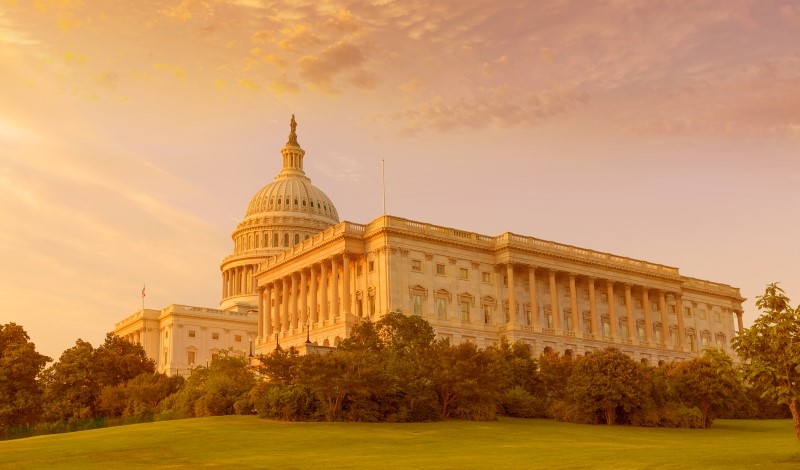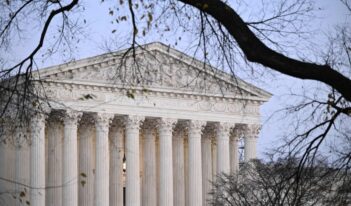
An upcoming Supreme Court case highlights why businesses and individuals favor for-cause protection for administrative law judges.
The U.S. Supreme Court is set to review the U.S. Court of Appeals for the Fifth Circuit’s decision in Jarkesy v. SEC, which held that the U.S. Securities and Exchange Commission’s (SEC) proceeding against Jarkesy and his company for possible securities fraud violated the Constitution in three separate ways.
One of those potential violations was that the administrative law judge (ALJ) who heard Jarkesy’s case could only be removed from her position “for cause.” The Fifth Circuit concluded that this removal protection interfered with the ability of the President under Article II of the U.S. Constitution to take care that the laws be faithfully executed or, in non-legal language, to supervise the policymaking activities of the executive branch.
The Court will assess the legal arguments on both sides. But the controversy invites a different question: Who wants ALJs to be able to be removed from office at will, instead of requiring that good cause exist for taking adverse action against them? To be clear, removal at will would mean that an ALJ could be fired by the agency for which they work either because their superiors disagreed with a decision they made, or for what would otherwise be an impermissibly discriminatory reason, or for no reason at all.
The easy answer in the Jarkesy case is that Jarkesy wants removal protection for ALJs to be determined to be unconstitutional because a favorable ruling will overturn ALJ orders that barred him from the investment business, assessed civil penalties against him, and required him to disgorge hundreds of thousands dollars of what the SEC claims are wrongful gains. A victory would void the adverse orders against him and give him another chance to defend himself.
But what about all of the rest of the businesses and individuals who have SEC cases pending against them? Would they prefer to have their cases decided by ALJs who are relatively independent and call the cases as they see them? Or would they like to have ALJs who are looking over their shoulders and thinking about whether a ruling against the SEC might cost them their jobs?
The legislative history of the Administrative Procedure Act, which introduced the for-cause removal protection for ALJs, reveals that its purpose was to ensure that ALJs were not biased in favor of the agency that employed them. It did so by preventing an agency from taking adverse personnel actions against ALJs unless there was good cause, which was sustained by what is now the independent U.S. Merit Systems Protection Board. The problem for agency adjudications is that the agency both initiates—or prosecutes—the proceeding and, ultimately, determines the outcome. Assuming that this dual functioning will continue, Congress likely was correct that regulated parties will generally be treated more fairly with an ALJ who has for-cause protection than one who is serving at will, which is contrary to what the Fifth Circuit held.
Perhaps it is the President who cares. The Fifth Circuit invoked the President’s position and “take care” duty in holding that the SEC’s limits on ALJ removal were unconstitutional. It is doubtful, however, that any President knows or cares what an ALJ at the SEC is doing, such that he would want to have the power—and hence the responsibility—to remove them if the judge acts unwisely or even does not comply fully with the law.
There is an even stronger reason why the President, as head of the executive branch, does not care about this issue: Under the applicable statutes, it is not the President, but the head of the agency, who has the authority to fire an ALJ. Indeed, in the case on which the Fifth Circuit relied, Free Enterprise Fund v. Public Company Accounting Oversight Board, the Court determined that the appropriate remedy to correct the agency’s unconstitutional for-cause removal restriction was still to follow the statute that gave the SEC the removal power, but to do so by excising the for-cause limitation. No statute of which I am aware gives a President any role in ALJ removal, and so a victory would not augment presidential powers, except in the most indirect way.
Although the Biden Administration is defending ALJ independence, the Trump Administration took the opposite position in Lucia v. SEC. The issue on which the Supreme Court granted review in Lucia was whether ALJs at the SEC are employees or “inferior officers” under the Appointments Clause of the U.S. Constitution. If, as the Court held, ALJs are inferior officers, then they must be appointed by the agency itself, and not by agency staff, as had been the practice. Going forward, that change had little practical significance, but its determined non-compliance with the Appointments Clause did require the SEC to redo the proceeding against Lucia. The Trump Administration sided with Lucia, but also went even further and asked the Court to rule on the removal issue that is now pending in Jarkesy. The Court declined to decide the question about for-cause removal projection in that case.
The motive of the Trump Administration in taking that position is not clear, but an educated guess is that it was part of a goal of the proponents of the unitary executive theory, many of whom held high-level positions in the Trump Justice Department, to overturn the for-cause removal protections upheld in Humphrey’s Executor v. United States. That goal is understandable because it would give all incoming Presidents the opportunity to replace any agency head, including members of multi-member bodies such as the SEC, with a person of their choice―assuming that they can get them confirmed by the Senate. Even then, a further barrier exists: The statutes governing many agencies limit the number of members of the agency that belong to each political party, and so firing an existing commissioner may result in an agency without a quorum, rather than one ready to do the President’s bidding. Perhaps the Trump Administration thus saw the elimination of restrictions on ALJ removals as a first step toward the larger goal.
There is one other reason why some administrations, as well as others concerned about the process of administrative adjudication, might want to eliminate or at least modify for-cause protection for ALJs. Most of the ALJs today—about 1,500—work at the Social Security Administration, which is a benefits agency, not a regulator. Because of that difference, the notion of pro-agency bias, which prompted Congress to provide ALJs with for-cause protection, is much less of a problem in most adjudications, although some administrations are less pro-claimant than others as a matter of policy, while staying within the law.
There is, however, another problem at the Social Security Administration: supposed variability among ALJs. For example, some ALJs are alleged to be much less productive than average and some seem to be either much more or much less favorable to claimants generally. Critics of for-cause removal rules argue that these rules prevent agency officials from instituting many corrective measures. Regardless of whether those concerns are valid, the elimination of for-cause removal for ALJs working for regulatory agencies such as the SEC is a vast overkill and would not solve that problem.
Finally, many of those who advocate the end of for-cause protection for ALJs are, ironically, the same people who object to the power of regulatory agencies generally. Thus, their support for sustaining the removal portion of the Fifth Circuit’s decision in Jarkesy would be to increase the power of agency heads at the expense of the individuals and companies that they regulate—an impact that perhaps undermines their broader deregulatory agenda.




